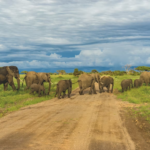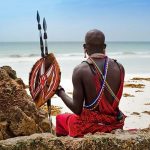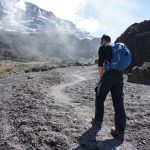What happens during a cultural tour in Tanzania

In all its splendor and diversity, the most appeasing factor that brings in a thousand of travelers from around the globe to Tanzania is the warmth of the local people. You may be flattered by the luxurious lodges and beach resorts, the sweet flavor in local cuisine, the comfort in your bed under a canvas tent or the most memorable game drive in the wild. Behind every unforgettable experience is the deep rooted tradition of the Swahili culture that may be overlooked. That is why during your thrilling safaris, our courteous guide, recommend you to halt and soak in real experiences.
Ever thought of speaking to the Masai walking by the vast grazing land or fishermen wading in the lakes? When you opt for a culture tour in Tanzania, this is not merely a moment of meet and greet. Within few minutes, you will see yourself carried away by the nostalgic, historical and the most authentic impressions of Tanzania. Wondering what happens during these locally inspired encounters? Here is what you should expect during a cultural exploration.

A village site en route a cultural tour in the Northern Safari Circuit
An opportunity to meet over 100 tribes of Tanzania
You may be familiar with the red attired and bald headed Masai walking with their cattle in the rich lands of the Ngorongoro Crater and the Serengeti National Park. These are just one of the hundred traditional groups living in Tanzania. A cultural tour in Tanzania gives you the chance to meet diverse communities such as the Hadzabe tribe; the last hunter gatherers in the world- the Chagga; the business community, the Datoga, Wahehe and various traditional groups spread across the country. You will be often guided in their traditional homes and get to learn about their lifestyle en route to your safari destinations or during an exclusive cultural expedition.

A masai with her cattle in search of a grazing land
Immerse in local experiences
The famous cultural site, Mto Wa Mbu is a diverse, and interactive town inhabited by groups of local population, each coming from a traditional background. It is here you get to spend almost a full day and learn about their lifestyle from a cultural perspective. Hike the Balala hill through the Rift Valley, visit the local waterfalls and walk through the fields of farms. You will get to learn about the 30 varieties of bananas also brewed into beer and extract palm oils. Weave mats, cook and savour local cuisine in clay pots just outside the traditional homes.

A hadza male targeting at his prey
Travel back to time
You may be astonished but some traditional groups of Tanzania still follow the same practices as their ancestors. The Hadzabe for instance are nomads that walk with bows and arrows to hunt for food- mostly bushmeat. In Lake Eyasi, you will learn how to make spears and local medicines or graze cattle around the Bomas in the Ngorongoro crater with the Masai. The Serneto Masai Boma is a famous cultural point followed by the Ekmpakkai in the Ngorongoro where age old traditions still exist. You can also choose to live with the families for a day or more. Taste local beers, be a part of the ceremonies and learn about their rituals.

The traditional Masai dance- a moment to behold
A photographic journey
During your safari, you will love to document these experiences and mostly the tribes do not mind being a part of your memory collection with due permission. In the Meru region, you can visit local homes, listen to fables, farm with the local communities and visit various project sites for coffee and tea plantation, irrigation and farming. The ‘Wameru’ are very welcoming and take you around their homes, hike the Lekimana hills with you and later invite you for a traditional feast at their home. You can also visit projects that are currently run by women; mostly farming, seeing and gardening. If you are in Arusha- the Safari capital, these local experience are enriching and continue to be a favored day time excursion.

Stone Town- A UNESCO World Heritage SITE
Travel to historical sites
Tanzania’s culture can largely be understood from its numerous historical architecture sites spread across the country. These include the famous ‘Cradle of Humankind’ the Olduvai George were basic stone tools were first made almost 200 years old, the historical ruins of Kilwa and Songo Mara, the Bagomoto Kaole ruins and the Kondoa Rock paintings, most of which are the classic UNESCO World Heritage Sites and can be visited during your safari in Tanzania. Further down to the Selous, you can also walk with the Bushmen and explore the rich biodiversity of the largest game reserve of Africa.
Are you interested to club your safari with a cultural tour in Tanzania? Kearsleys offer some of the best cultural tourism itineraries and our friendly safari guides know the best places to halt by for an enriching traditional experience. Let us explore together!


























This is very enlightening! I’ve always been so curious about the tribes living in the area and the culture. I imagine it to be so different from what we are all used to. I think it would be great to experience and learn a thing or two from these people. I’ve read that the Hadzabe Tribe actually have their own language known as “clicking” which is completely unrelated to any other language in the world. And they don’t grow crops and are nomadic. I’d love to experience their culture even for just one day and see things from their point of view. Just imagine how they’ve been able to survive without the influence of westernization.